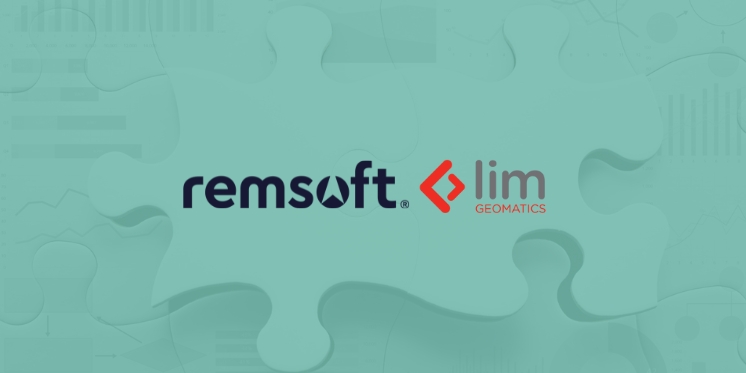Forestry innovators from the Asia Pacific region gathered in Melbourne, Australia this past October to hear how organizations are using Remsoft forest technology to meet environmental, sustainability and financial goals in a dynamic market environment. The ideas shared are relevant and timely as we kick off a new year.
Topics included industry and government approaches for solving big data challenges and using analytics, optimization modeling and other intelligence technologies to improve forest planning outcomes.
In the presentations, we heard how companies are connecting their data and their planning workflows to simplify complex workflows, be more agile and efficient, and uncover opportunities to reduce costs and improve outcomes across the forest value chain. They are working towards greater transparency and better collaboration in the forest planning process, and this is helping to increase efficiency and accuracy.
The conference was themed around ‘Insight and Impact in Forestry’ and some of the top ideas are highlighted below.
Agility is a core competency in a rapidly changing market
Reporting on Australasia market outlook and trends, Rudolf van Rensburg, Director of Margules Groome Consulting, described developments that were shaping regional and local markets – and the opportunities that exist for forest sector players who are nimble and can quickly adapt to a rapidly changing market environment. “The world is getting hungrier for fibre, and it remains to be seen how these growing demands are going to be met,” says van Rensburg “The future cannot be predicted but we can plan, and we must plan with more scenario outlooks than ever before,”
Unify, simplify to improve efficiency and accuracy
When building its plan for allocating equipment and budgeting for Nelson Forests, OneFortyOne Plantations (OFO) recognized that spreadsheets could not give them the visibility necessary to determine harvesting equipment imbalances before they became an issue, or the agility to adapt to inevitable changes once they occurred. OFO has come a long way in automating its planning workflows, and is now integrating three models to address complexities at four levels of planning. Benefits have included a simplified budget process, increased efficiency, reduced operating costs, and a more accurate long-term plan. “We decided to get rid of all spreadsheets for planning,” says Marion Hughes, Manager Resources Planning and Analytics with OFO. “The goal was to have one plan for the organization that we all follow.”
Harvest and road planning are best done together
Cost increases in harvesting are often caused by the spread of operations and the lack of coordination between harvest and road planning. Maintaining more roads than necessary at any given time results in higher road maintenance costs, more crew movement costs, and more complex roadside inventory and transportation management. This is the challenge that Remsoft’s Road Optimizer was designed to solve by providing an integrated solution for spatial harvest, road and wood supply planning that ensures better alignment across infrastructure and harvesting activities. Remsoft’s Marie Eve Fillion described how a forest company was able to improve road allocation for harvesting and wood supply, and reduce the cost of delivered wood, by coordinating its spatial harvest schedule with road network decision-making and timing road infrastructure capital costs to align with harvest volume. “They had some very challenging spatial constraints, “says Fillion. “Careful planning and prescriptive analytics enabled them to access un-roaded areas for the least cost – while still maximizing their overall return.”
Datamarts can drive smarter collaboration and faster outcomes
Gathering the data to build models for HVP’s annual planning used to take months. By focusing on getting the right data in their database, performing quality assurance to ensure data reliability and moving good data into a datamart, the team is now able to build models within hours instead of months. “Having all of our data in a single datamart means that we can easily run other models when needed,” says Andrew Tucker, Northern Resources Manager.“Our input data is all the same format, so we can be more robust in testing – resulting in more transparent outputs. We can get rid of the ‘black box’ and provide all the detail needed.”
The team now has cycling models and is able to model scenarios and prepare outputs that were not possible in the past. “We’re able to answer pretty much any question that’s thrown at us,” adds Sharon Occhipinti, Resource Planning Manager.
“The greatest strength of this transformation is that it now allows non-modellers access to the model” concludes Tucker “and gives them the ability to manipulate it without any real requirement to understand any of the deep analytics that goes into it.”
Connectivity is key to creating insights and solving bigger problems
During the conference we learned how improvements in data quality and accessibility combined with connected planning processes, intelligent analytics, greater transparency and more collaboration are all contributing to transformative, positive change – in how forests are planned and managed for sustainability and profitability.
“It speaks to the value being unlocked by connected, digital forest intelligence,” says Andrea Feunekes, Remsoft CEO, and while technology is a key enabler – it’s as much about people and business processes. “What’s transformative is the interaction of forestry professionals with new enabling processes, more data, and intelligent technology that supports better outcomes.”
As more technologies are adopted across the industry, connectivity is becoming increasingly important. This connectivity is key to creating insights, making smarter decisions, and solving bigger problems – faster.
Interested in learning how Remsoft can help to bring more agility, transparency and intelligence to your forest planning initiatives? Contact us to discuss your business objectives and how we can help.




